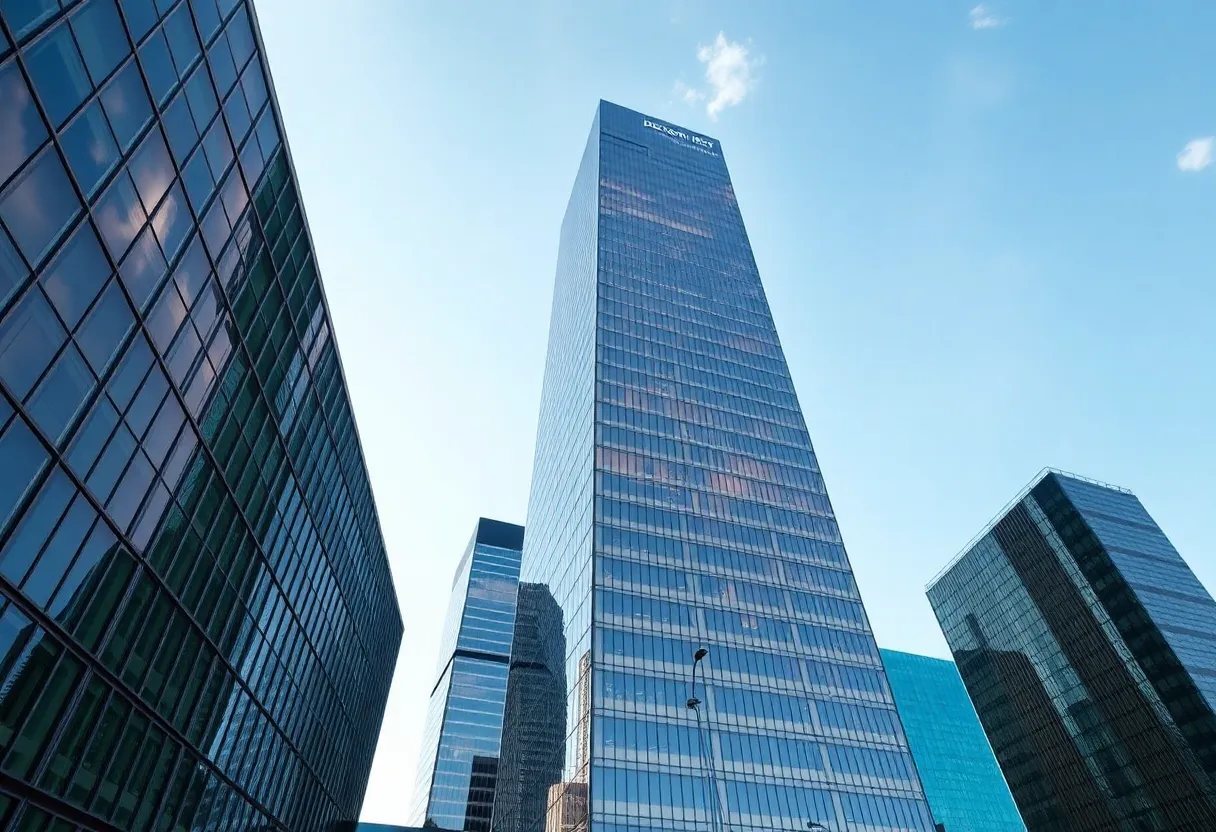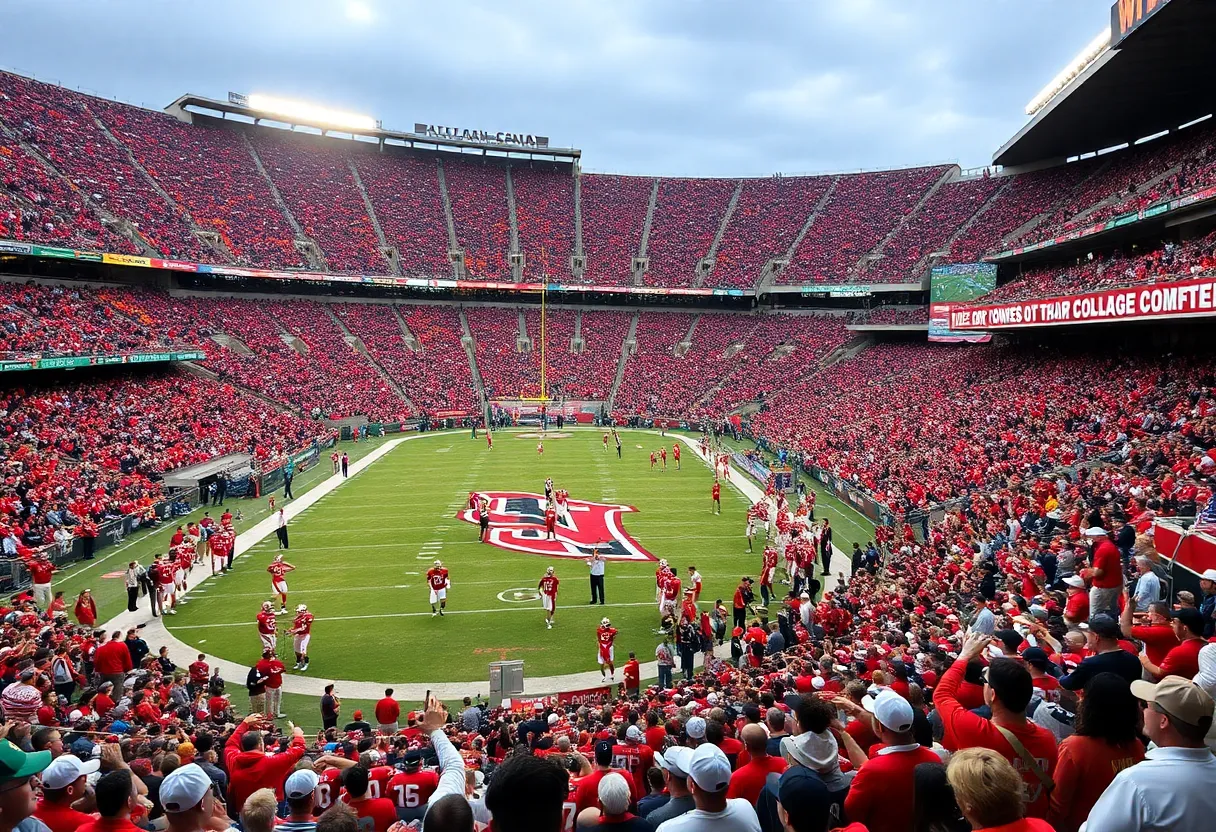Oklahoma City, October 14, 2025
The Devon Energy Center in Oklahoma City has been awarded the title of the coolest building in the state, recognized for its innovative architecture and energy-efficient design. Standing 844 feet tall, this modern skyscraper features a glass facade that maximizes natural light and reduces energy consumption. Completed in 2012, it symbolizes Oklahoma’s shift towards sustainability in the business environment, showcasing how eco-friendly practices can enhance operational efficiency and appeal to eco-conscious investors.
Oklahoma City: Devon Energy Center Named State’s Coolest Building
In a recent highlight of architectural innovation, the Devon Energy Center in Oklahoma City has been recognized as the coolest building in Oklahoma. This towering structure stands out for its modern architecture that blends sleek design with practical functionality. The recognition underscores how innovative designs can shape the business landscape in energy-focused regions like Oklahoma. At 844 feet tall, it serves as the headquarters for Devon Energy, one of the state’s major players in the oil and gas sector. This designation draws attention to how buildings can reflect broader shifts toward efficiency and environmental responsibility.
Key Features Driving the Recognition
The Devon Energy Center earns its title through a combination of aesthetic appeal and forward-thinking engineering. Its glass facade allows natural light to flood interiors, reducing the need for artificial lighting during the day. This design choice not only creates a bright, open workspace but also cuts down on energy use. Inside, the building incorporates advanced systems for climate control, ensuring comfort without excessive power consumption. These elements highlight a commitment to energy-efficient design, which has become a benchmark for commercial properties in the area.
Located in downtown Oklahoma City, the center was completed in 2012 and quickly became a symbol of the city’s growing business hub. The structure’s 44 stories house offices, conference spaces, and amenities that support a productive work environment. From an external view, its curved lines and reflective surfaces give it a distinctive presence on the skyline, making it a landmark that’s hard to miss. This visual impact combined with its operational efficiency is what sets it apart from other buildings in the state.
Sustainability’s Role in Business Practices
The Devon Energy Center‘s energy-efficient design points to a larger trend in Oklahoma’s business community. Local firms are increasingly adopting similar green practices to align with global sustainability goals. These efforts include installing solar panels, upgrading to LED lighting, and implementing water-saving fixtures in their facilities. By doing so, businesses aim to lower their environmental footprint while improving bottom lines. For instance, switching to energy-efficient systems can reduce operational costs by as much as 20% over time, based on industry assessments of similar upgrades.
This shift is particularly relevant in Oklahoma, where the energy sector dominates the economy. Companies that once focused solely on resource extraction are now exploring ways to operate more sustainably. The Devon Energy Center serves as a model, demonstrating that high-rise offices can incorporate green technologies without sacrificing style or performance. As a result, these practices help firms meet regulatory requirements and appeal to a workforce that values eco-friendly workplaces. The building’s LEED certification further validates its approach, showing measurable benefits in resource conservation.
Attracting Investment Through Eco-Conscious Design
Beyond cost savings, adopting green practices is helping Oklahoma businesses attract eco-conscious investors. In recent years, investment funds have prioritized companies that demonstrate environmental stewardship. The Devon Energy Center‘s design aligns with this preference, positioning its occupant as a leader in sustainable energy operations. Investors see potential in firms that can balance profitability with responsibility, especially in volatile markets like oil and gas. This recognition could encourage more capital to flow into Oklahoma’s commercial real estate and related sectors.
Locally, the ripple effects are visible in new developments around downtown Oklahoma City. Other office buildings and mixed-use projects are incorporating similar features, such as rainwater harvesting and smart energy management. These initiatives not only enhance property values but also contribute to the city’s reputation as a forward-thinking destination. For businesses, this means access to talent and partnerships that prioritize long-term viability over short-term gains. The 20% reduction in operational costs becomes a compelling argument when pitching to stakeholders, reinforcing the economic sense of sustainability.
Background on Oklahoma’s Architectural Evolution
Oklahoma City’s skyline has evolved significantly since the mid-20th century, when functional designs dominated. The arrival of modern structures like the Devon Energy Center marks a departure toward innovation. This building replaced older infrastructure, bringing a fresh perspective to urban planning. Its construction addressed the need for consolidated office space in a growing metropolitan area, supporting thousands of jobs in the process. The energy-efficient aspects were integrated from the planning stage, reflecting industry-wide changes post-2000s.
In the broader context, Oklahoma’s push toward sustainability ties into national trends. States with heavy industrial bases are adapting to federal incentives for green building. This has led to certifications and standards that guide new projects, ensuring they contribute positively to communities. The Devon Energy Center exemplifies how local efforts can align with these goals, fostering a business environment that’s resilient and adaptable. As more firms follow suit, the state could see sustained economic growth driven by efficient, investor-friendly practices.
Implications for Future Developments
Looking ahead, the spotlight on the Devon Energy Center may inspire similar projects across Oklahoma. Developers are already exploring ways to replicate its success in smaller cities and rural areas, tailoring green practices to different scales. This could broaden access to cost-saving technologies, benefiting a wider range of businesses. Ultimately, the building’s recognition reinforces the value of blending modern architecture with sustainability, shaping a more efficient future for the state’s economy.
Frequently Asked Questions
What building has been recognized as Oklahoma’s coolest?
The Devon Energy Center in Oklahoma City has been recognized as the coolest building in Oklahoma.
What makes the Devon Energy Center stand out?
Its modern architecture and energy-efficient design highlight the state’s push toward sustainability in business.
How are local firms responding to this trend?
Local firms are adopting similar green practices, potentially reducing operational costs by up to 20% and attracting eco-conscious investors.
Where is the Devon Energy Center located?
The Devon Energy Center is located in downtown Oklahoma City.
Key Features of the Devon Energy Center
The following table outlines the primary attributes that contribute to the building’s recognition.
| Feature | Description |
|---|---|
| Modern Architecture | Sleek glass facade and 44-story design that defines Oklahoma City’s skyline. |
| Energy-Efficient Design | Advanced climate control and natural lighting systems reducing energy use. |
| Sustainability Impact | Supports green practices that cut operational costs by up to 20%. |
| Business Benefits | Attracts eco-conscious investors and enhances environmental stewardship. |
Deeper Dive: News & Info About This Topic
HERE Resources
Oklahoma City University Launches New Cybersecurity Program
Devon Energy Announces Major Expansion in Oklahoma City
Legends Tower Oklahoma City: Developers Push Forward Amid Doubts
Oklahoma Small Business Development Center Holds Virtual Summit
Oklahoma City Hosts Oklahoma Oil and Gas Expo
Oklahoma Supreme Court Strikes Down Business Courts





